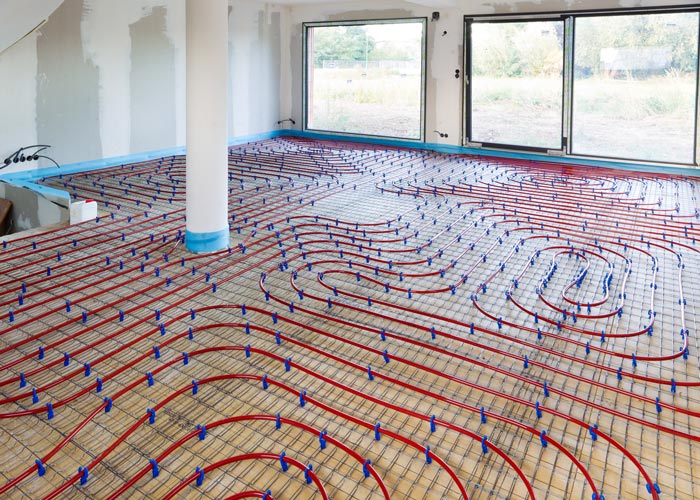7 Pros and Cons of In-Floor Heating that may Surprise you
- Published By: District Floor Depot

When you live in a climate that experiences colder temperatures, you understand the importance of a sound in-floor heating system for your home.
While it is essential to keep you and your family warm and comfortable during the frigid months, you want to make sure you are utilizing a system that is both effective and efficient.
One such system is in-floor heating – and you may be surprised just how beneficial this type of heating may be for you, your family, and your home.
What is In-Floor Heating?
In-floor heating is a type of system used to heat homes. The warmth is supplied by tubes or electric wire located underneath the floor. Not just a trend, in-floor heating offers many unique benefits.
There are two types of in-floor heating: electric and water-based.
Electric in-floor heating involves zigzagging loops of wire installed under the floor. This type of in-floor heating is connected to your home’s electrical system.
Water-based in-floor heating is connected to your home’s boiler or water heater and uses circulated hot water to produce heat.
If you are considering in-floor heating as your primary source of warmth in your home, there are many advantages to using this system. However, there are also some aspects of in-floor heating that should be taken into consideration as well.
The Pros of In-Floor Heating
Uniform Heating
Unlike other heating systems such as furnaces and boilers, in-floor heating warms the entire room instead of providing heat from only one location.
This provides an even ambient temperature as well as prevents cold spots throughout the room.
Maintenance-Free
Because there are no ducts or filters, there is no need to perform any yearly inspections or maintenance on an in-floor heating system.
Most systems offer a 25-30 year warranty.
Allergy-Free
Furnaces operate by blowing warm air throughout your home via ducts. Even with properly cleaned ducts and filters, allergens such as dust will still circulate throughout your space.
Since in-floor heating eliminates the need for air to blow around your home, it reduces the amount of allergens in the atmosphere.
Energy Efficient
What may surprise you about in-floor heating is, that although it operates via electricity or water, it will reduce your energy bill significantly.
This is due to the fact that the components of in-floor heating do not need to heat up as much as a baseboard heater or cast iron register to provide the heat necessary to keep your home at a comfortable temperature.
Most homeowners report a savings of at least 15% on their electricity bills; it is very efficient and mostly effortless.
The Cons of In-Floor Heating
Must Remove Existing Floor
In-floor heating cannot be installed under the existing floor, so the floor must be removed in order to accommodate the heating system.
It is recommended that in-floor heating systems be installed during renovations or new construction.
Slightly Elevates the Height of the Floor
This may be a minor inconvenience for homeowners seeking in-floor heating, but this heating system requires components that may be up to ½ inch thick.
That, paired with any necessary underlay, may reduce the height of your room.
Can Be Costly
Although the savings are immense, the initial cost of installing in-floor heating may be daunting to someone looking into the idea.
The average cost estimation of materials is around $10-$20 per square foot. Also, if you are installing electric in-floor heating, you will also require a qualified electrician to connect the system to your power supply.
Are You Considering In Floor Heating for Your Home?
If so, be sure to contact a licensed installer to ensure quality workmanship and professional results in your home.
